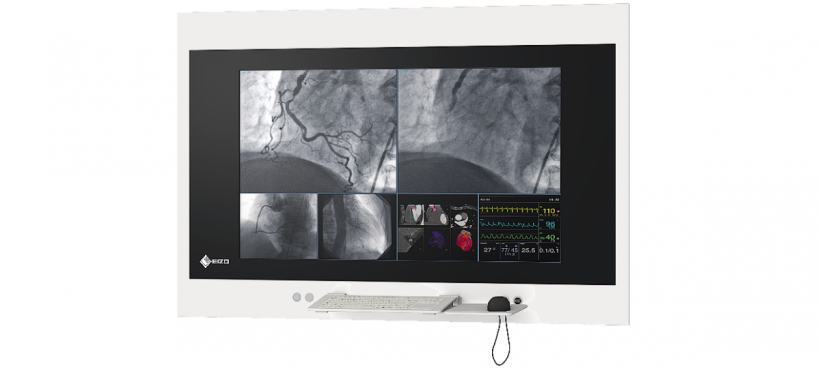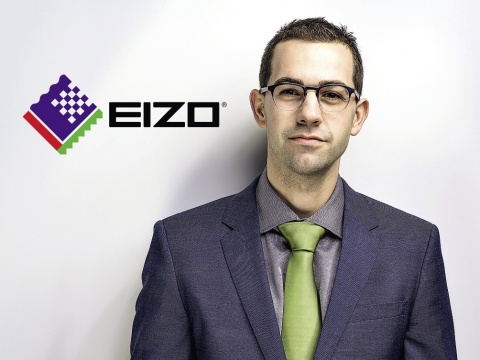Sponsored • System solutions
Tomorrow’s operating theatre
Previously known as a provider of high quality, high-end monitors, Eizo is developing into a systems solutions supplier.
The CuratOR surgical panels are centrepieces of the installations. They facilitate the administration of patient data, control of external devices or the transmission of image- and sound signals.
Matthias Lubkowitz
The company’s new division for operating theatre (OT) solutions is aimed at advancing technological networking in the OT. Matthias Lubkowitz, the company’s Vice President of this division, reports on the new requirements for intelligent operating theatre technology.
Speaking of the multitude of data generated in today’s hospitals – data from MRI and CT scans, endoscopy videos and electronic patient files – Matthias Lubkowitz pointed out that many hospitals ‘… make do with PCs on mobile technology trolleys, with the respective logistics, space and hygiene problems this causes’.
Eizo GmbH, OR Solutions, offers monitors, video management and data transmission technology from one source,’ he explains. ‘The CuratOR surgical panels are centrepieces of the installations. They facilitate the administration of patient data, control of external devices or the transmission of image- and sound signals. The user or clinician respectively perceives the surgical panels as wall-mounted monitors with PC systems. Additionally, so-called monitor suspension systems or satellite monitors stream the required information to all relevant locations in the operating theatre or elsewhere.’

How do the surgical panels work?
‘The user decides what can be seen on the monitors. The CuratOR Caliop software, named after one of the nine muses in Greek mythology, allows the user to select the information required for each monitor. Not only that – the screen can be divided into several segments, so that all image sources, ranging from MRI or CT scans and digital X-rays, from the patient file to live images from the endoscope, ultrasound or surgical cameras, to the display of vital parameters, can be displayed in selected combinations.
‘During surgery an operating theatre nurse usually controls the surgical panels. Depending on instructions received from the surgeon the nurse selects images for display on the monitors. The documentation can also be done via the surgical panels, such as information about which material is being used or whether complications occurred. A nurse usually loads the data into the hospital information system. ‘The customer normally decides on specific settings for different operating theatre situations, so-called pre-sets. These pre-sets can be selected based on the type of surgery, the location and even on the individual. Indeed, the system can even be configured according to an individual surgeon’s ideas.’
How many different sources can the system include?
‘The system can receive and transmit the most varied types of media signals. It’s so flexible that we can configure it specifically around our customers’ desires and requirements. All this is made possible by the technology that runs in the background. The central element of control is known as the large monitor manager. This important yet unimposing piece of equipment will be located in the technology room.
‘We differentiate between front and back end, with the customer mostly exposed to the front end. The entire system is independent of modalities and therefore compatible with equipment from different manufacturers, and it can process all known analogue and digital signals.’

Why has Eizo entered the systems solutions field?
‘Our company has been known as a provider of high end monitors for more than 50 years,’ Lubkowitz reflected, and listed some of their presence in renowned design agencies, air traffic control centres, aerospace setups and the automotive industry. ‘In 2002 we made the move into the sensitive world of medicine and developed high quality monitors in cooperation with doctors, IT specialists and specialists in medical technology. With the CuratOR, Eizo is now moving into the field of solution providers.
‘We offer system solutions for the operating theatre or, put even better, for the operating theatre of tomorrow. With our modular structure we are not only able to equip new settings with a complete infrastructure but also to adapt to existing environments. We have seen that the requirements in the operating theatre, and in the world of medicine as a whole, including all the IT networking, have become very complex. Whilst other, larger providers often feature complete solutions in their range we have designed our software very flexibly so that individual elements also can be easily adapted around the interfaces.’
How does this new division fit into the company?

‘Flexibility is something that’s also a feature of the corporate structure at Eizo. The company was founded in Japan in 1968, but is active worldwide. Our individual companies can act relatively independently of one another and are particularly adept at reacting promptly in project business. This is part of the reason behind our company’s success. The different mainstays deliver their expertise, allowing us to fall back on a multitude of competencies for high-end monitors and information technology as well as for customised solutions and the industry. ‘This,’ he concludes, ‘is very helpful when new ventures such as ours are being launched.’
Profile:
Matthias Lubkowitz is Vice President of the Eizo GmbH | OR Solution division. With a diploma in media technologies he worked as a research assistant at the Fraunhofer Institute, followed by a role at Bosch and later Panasonic, before entering the medical sphere in which he continues to operate today.
12.07.2016











